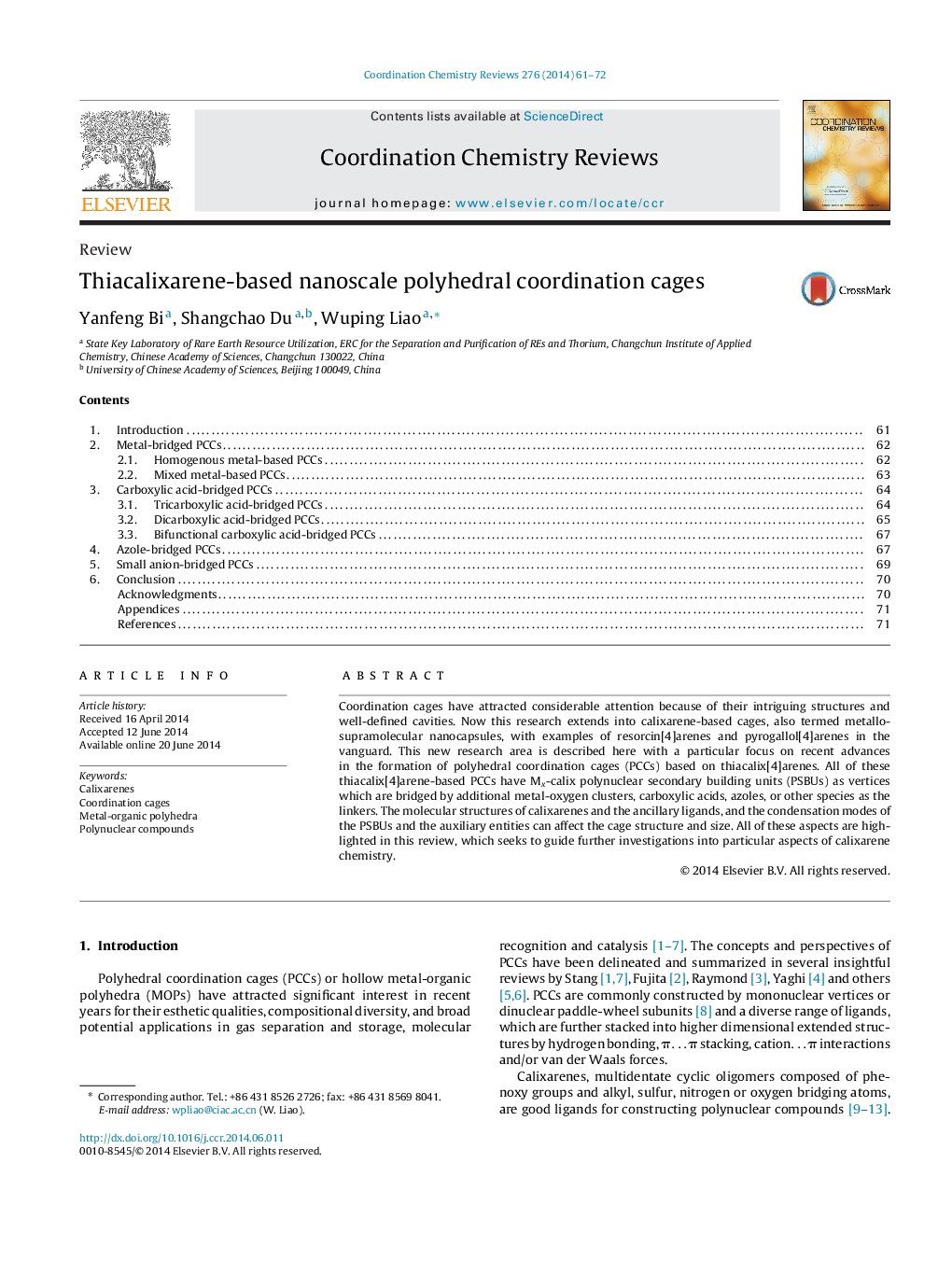| Article ID | Journal | Published Year | Pages | File Type |
|---|---|---|---|---|
| 1299083 | Coordination Chemistry Reviews | 2014 | 12 Pages |
•These cages have polynuclear metal-thiacalixarene SBUs as the vertices.•All the cages are constructed by linking the ‘lower-rims’ of calixarene molecules.•All the conic cavities of calixarene molecules point outside the cages.•Some apertures communicate the inner cavities and the outside.•The design methodology decides the component condensation mode and cage geometry.
Coordination cages have attracted considerable attention because of their intriguing structures and well-defined cavities. Now this research extends into calixarene-based cages, also termed metallo-supramolecular nanocapsules, with examples of resorcin[4]arenes and pyrogallol[4]arenes in the vanguard. This new research area is described here with a particular focus on recent advances in the formation of polyhedral coordination cages (PCCs) based on thiacalix[4]arenes. All of these thiacalix[4]arene-based PCCs have Mx-calix polynuclear secondary building units (PSBUs) as vertices which are bridged by additional metal-oxygen clusters, carboxylic acids, azoles, or other species as the linkers. The molecular structures of calixarenes and the ancillary ligands, and the condensation modes of the PSBUs and the auxiliary entities can affect the cage structure and size. All of these aspects are highlighted in this review, which seeks to guide further investigations into particular aspects of calixarene chemistry.
Graphical abstractFigure optionsDownload full-size imageDownload high-quality image (123 K)Download as PowerPoint slide
